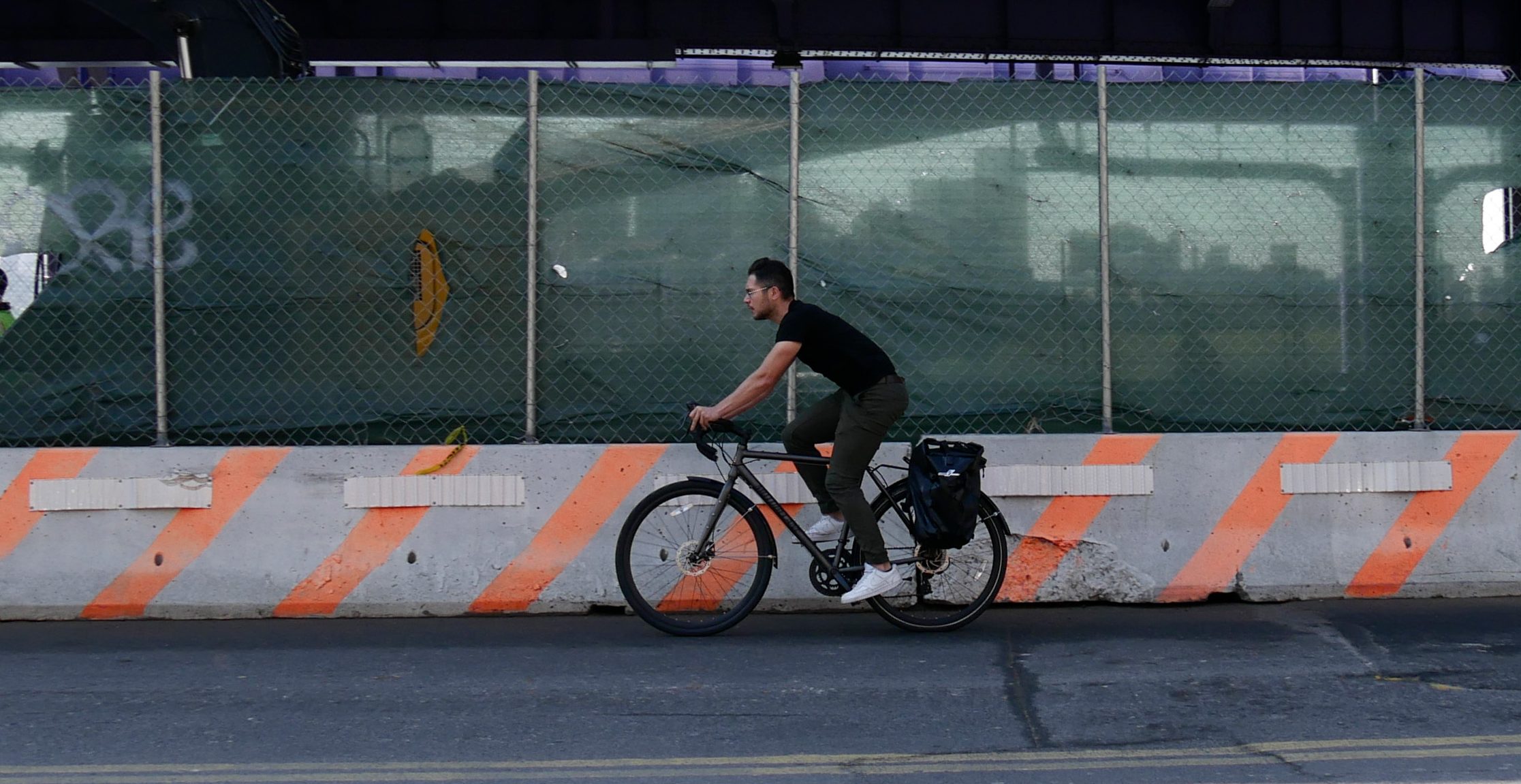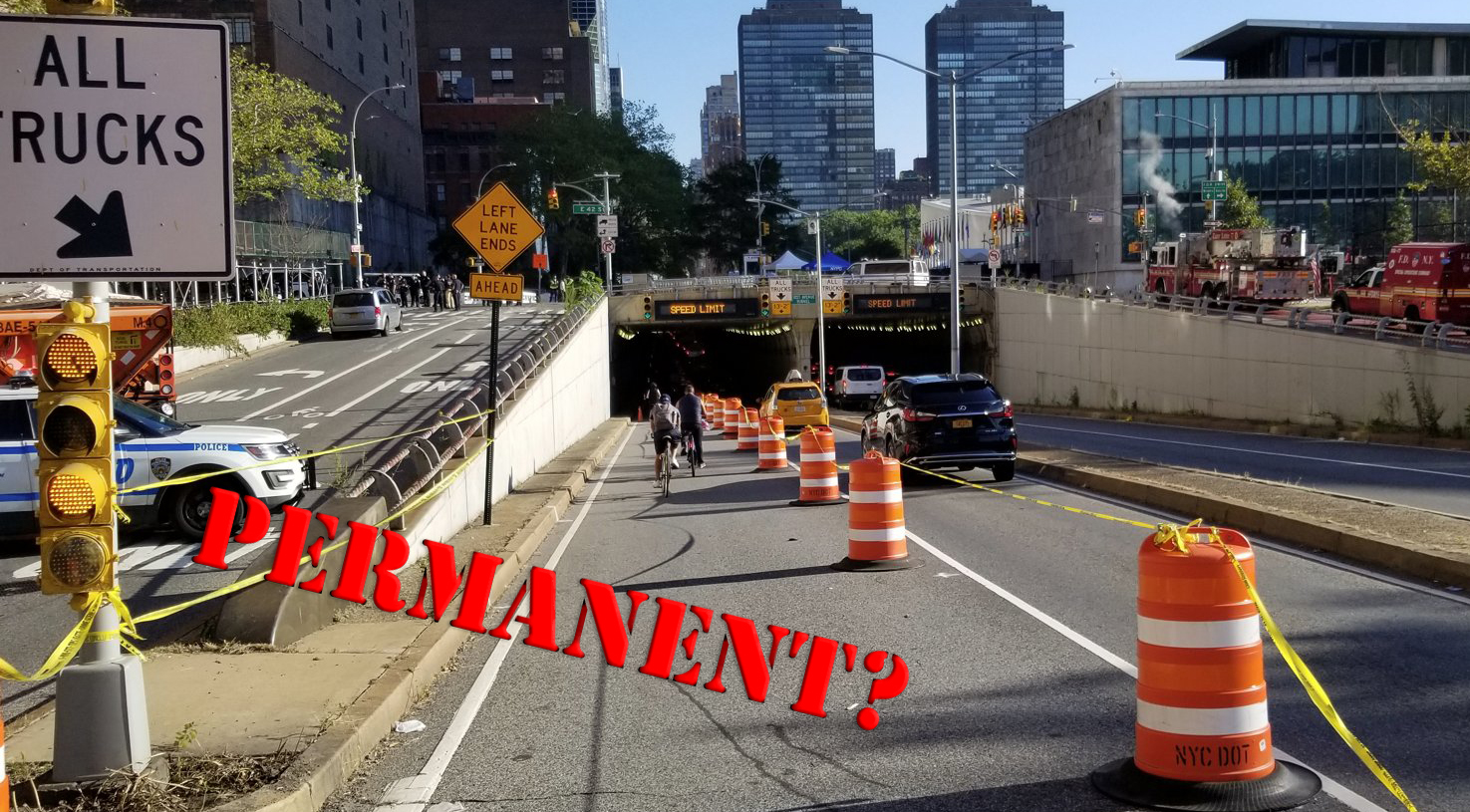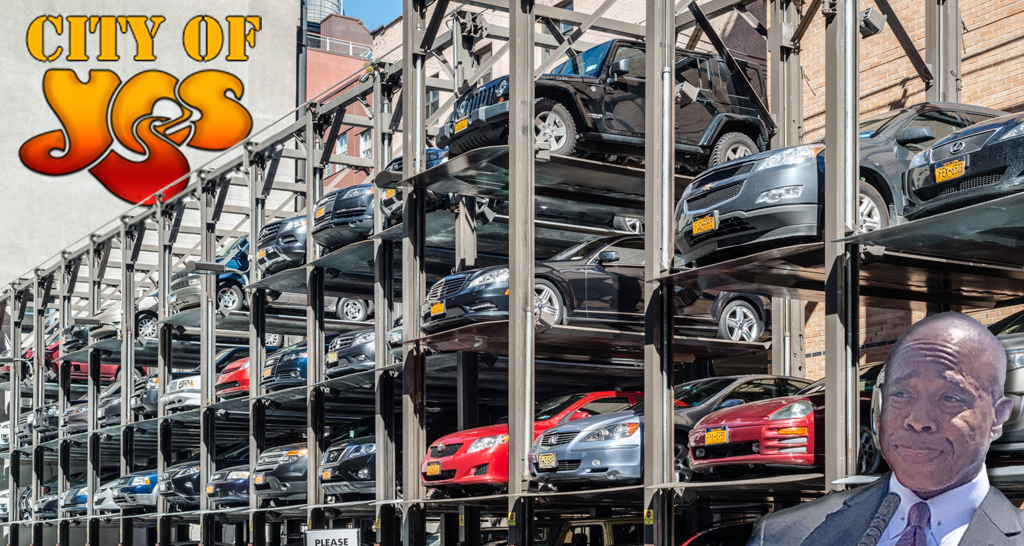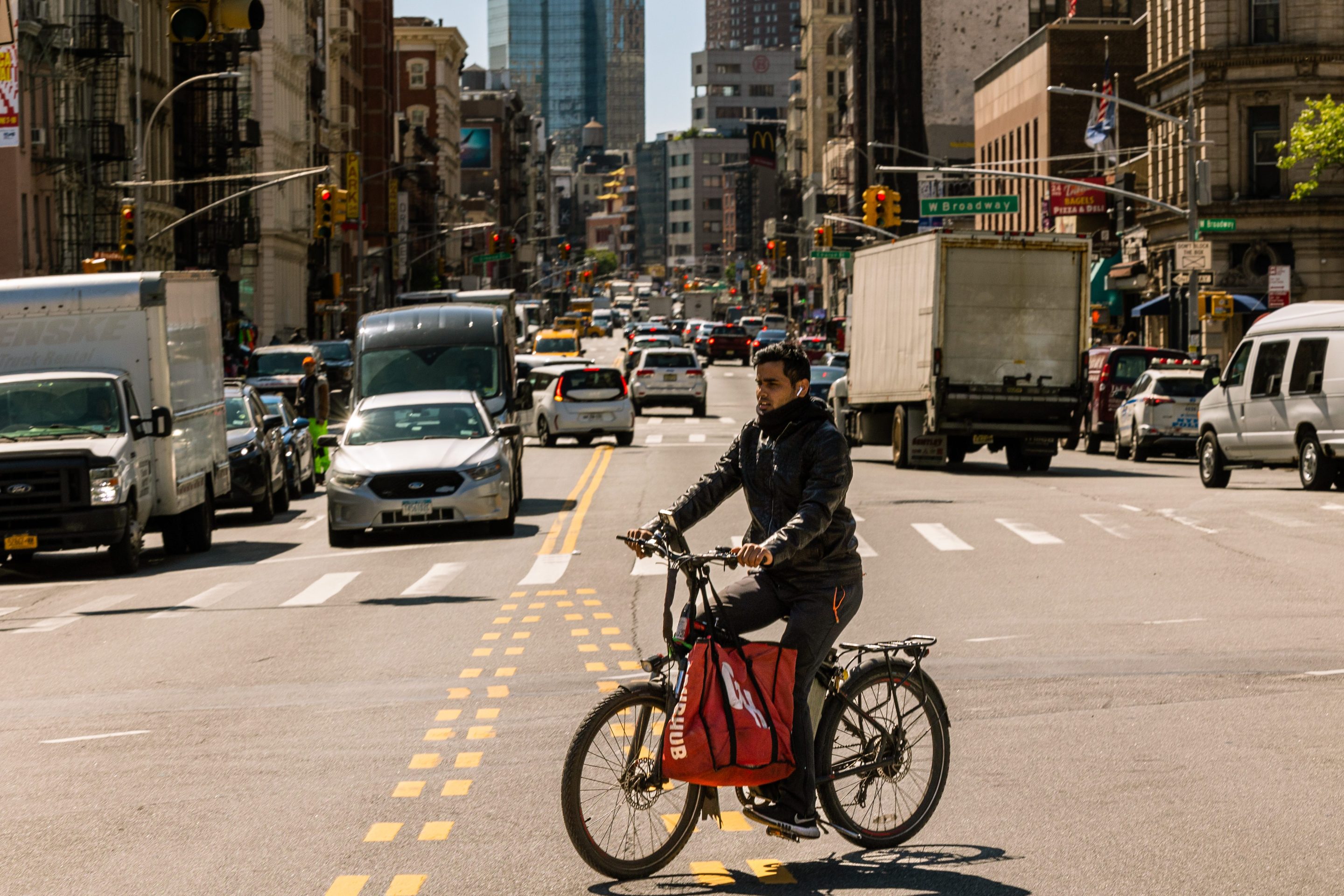A federal judge yesterday upheld NYPD rules which effectively outlaw bicycle rides with 50 or more cyclists that proceed without a permit. The case is closely associated with police crackdowns on Critical Mass but affects any group ride of sufficient size.
In his 54-page decision in favor of NYPD and the city of New York [PDF], District Court Judge Lewis Kaplan, a Staten Island native who holds a JD from Harvard Law (Class of 1969), dismissed the case put forward by the Five Borough Bicycle Club, Columbia history professor Kenneth T. Jackson (who organizes educational nighttime rides for students), and several Critical Mass participants. The cyclists' attorneys argued that the NYPD permit rules violate First Amendment rights to free speech and assembly, and that police have selectively issued citations to cyclists who have not broken any traffic laws.
Judge Kaplan rejected these claims across the board. One of the more fascinating aspects of Kaplan's ruling is his application of local traffic law to cyclists' behavior, and the way his judgments about traffic safety influence his judicial opinion. In concluding that NYPD's 50-person limit on group rides justifiably advances public safety, for instance, Kaplan writes:
Large groups of cyclists may well be more visible than individual cyclists and may take up less space than large groups of vehicles, but countervailing factors such as their lack of predictability and their tendency to try to stay together in a moving column, even if this means going through a red light, nevertheless endanger other travelers and disrupt orderly traffic flow. Their presence may add traffic volume that otherwise would be absent.
This reality was borne out by a video clip of the September 2007 Manhattan Critical Mass ride shown... at trial. As the Court noted at the time, the clip shows a cyclist engaging in dangerous behavior by pulling out and to the right of a motor vehicle that itself was in the process of pulling out of the bike lane to its right. The biker comes up from the motor vehicle driver’s blind spot and passes the motor vehicle on the right just as the motor vehicle begins to pull to the right and out of the bike lane. I find that the video demonstrates the danger of the cyclist's actions.
According to a court transcript obtained by Streetsblog, Kaplan is in fact referring to video shot in July, 2007, which appears beginning at the :37 mark in the above YouTube clip. It depicts a cyclist traveling south in the Broadway bike lane at 19th Street. When he encounters a BMW SUV partially obstructing his path, he bikes into car traffic and passes the SUV.
This behavior, in Judge Kaplan's estimation, is the cause of safety hazards and a reason to give legal standing to NYPD regulation of group rides. As for the motorist blocking a bike lane with his multi-ton SUV before merging back into traffic, without much seeming awareness of the cyclist approaching from behind, Kaplan's opinion gives no indication that such carelessness registers with him.
In another passage, on page 47, Kaplan interprets state law as requiring cyclists to ride as close to the right-hand curb as practicable if they are traveling at "less than the speed of normal traffic." It's a rather restrictive take on the legality of taking a lane, and omits the fact that the rule in question applies only to two-way streets. At no point in his decision does Kaplan mention the NYPD's reliance on section 1234 of the New York State traffic law to issue violations to Critical Mass cyclists, which plaintiffs cited as evidence of discriminatory enforcement. Section 1234, which requires cyclists to ride in the right hand curb, does not apply in New York City.
The Five Borough Bike Club says it is disappointed in Kaplan's ruling and will review the decision with other plaintiffs. No word yet on whether an appeal will be filed.




